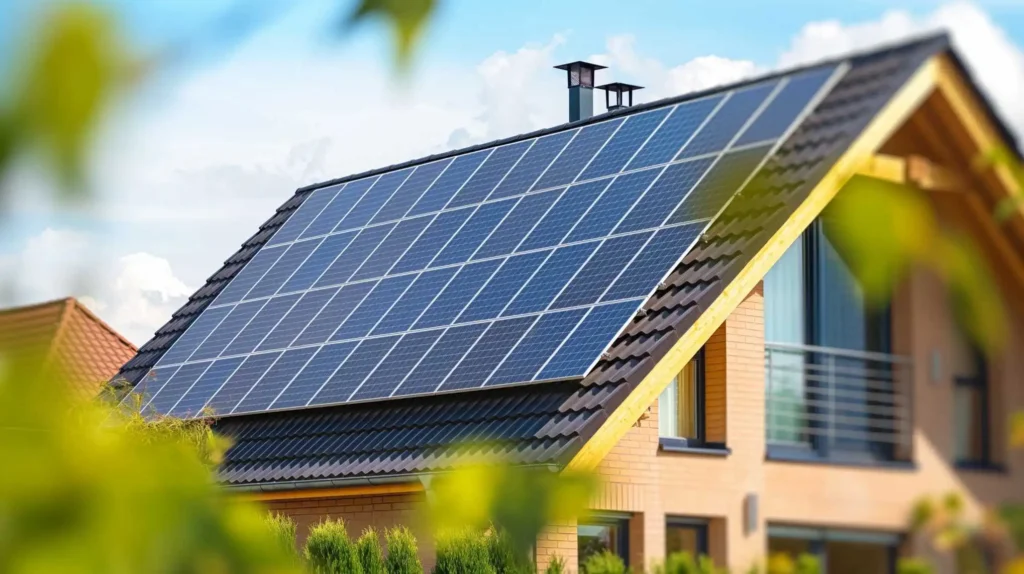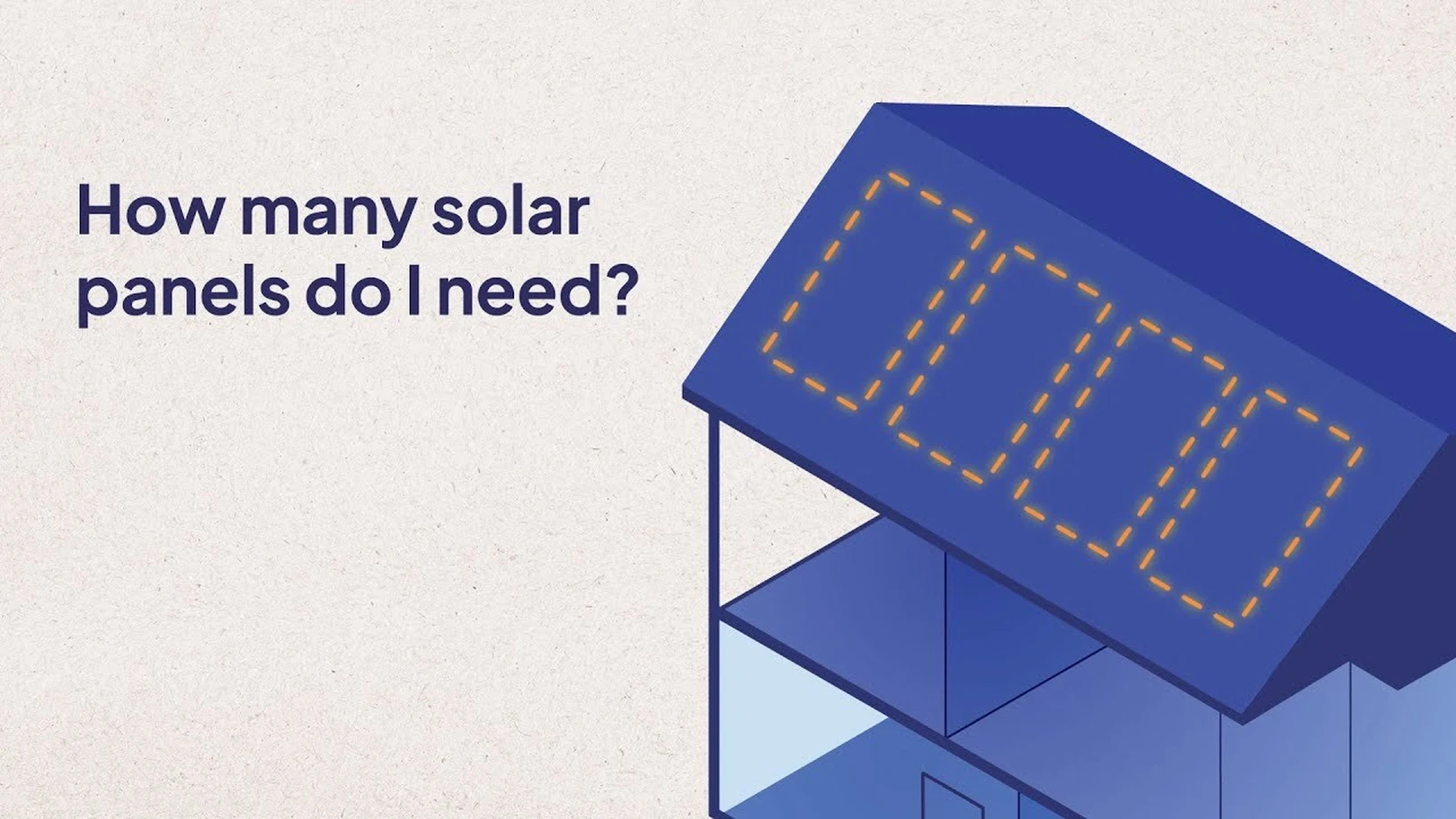Switching to solar energy is a smart move. But before you begin, one key question arises—what size solar system does your home need? Choosing the correct solar system size ensures that you save money, generate enough power, and avoid over- or under-investing.
This guide will help Indian homeowners calculate the right solar panel size for home use, with simple steps and real-life examples.
Step 1: Understand Your Electricity Usage
Start by checking your monthly electricity bills. You’ll find the number of units (kWh) you use each month.
Do this:
- Add up electricity units from the last 12 months.
- Divide by 12 to get your average monthly usage.
- Divide that by 30 to find your daily electricity consumption.
Example:
If your home uses 360 units a month:
360 ÷ 30 = 12 units/day
This number is your daily energy need, which you’ll use to size your solar system.

Step 2: Know the Sunlight in Your Area
The next step is to estimate the sunlight hours you get daily. This is known as peak sun hours. In most Indian cities, it’s about 4 to 6 hours per day.
Cities like Delhi, Jaipur, Hyderabad, and Bengaluru average around 5 sun hours/day. For reliable calculations, you can use 4.5 to 5 hours.
Step 3: Use the Simple Formula to Calculate Solar Size
Now you’re ready to estimate your solar system size.
Formula:
javaCopyEditSolar system size (kW) = Daily electricity usage (kWh) ÷ Peak sun hours
Then add a 20% buffer to cover energy losses (from heat, wiring, or inverter loss).
Example:
Daily usage = 12 units/day
Sun hours = 5 hours
12 ÷ 5 = 2.4 kW
2.4 × 1.2 (buffer) = 2.88 kW
Round up = 3 kW solar system for your home
Step 4: How Many Solar Panels Do You Need?
Most solar panels in India range from 330 to 550 watts.
To know how many panels you need:
javaCopyEditNumber of panels = Solar system size (in watts) ÷ Panel wattage
Example:
For 3 kW system and 330-watt panels:
3,000 ÷ 330 = approx. 9 panels
If you use 550-watt panels:
3,000 ÷ 550 ≈ 6 panels
So, your solar panel count depends on the wattage of each panel and total solar capacity.

Step 5: Check If Your Roof Has Enough Space
Each solar panel needs about 1.6 to 1.8 sq meters of space.
Use this guideline:
- 1 kW system → 80–100 sq ft
- 3 kW system → 240–300 sq ft
- 5 kW system → 400–500 sq ft
Make sure the area is:
- Shadow-free from 9 AM to 4 PM
- South-facing or flat
- Strong enough to support mounting structure
If roof space is limited, use high-efficiency monocrystalline panels to generate more power in less area.
Also Read Why the Inverter Is the Brain of Every Solar Inverter Power System
Step 6: Know Your Monthly and Annual Solar Output
Solar panels in India generate roughly 1,400 to 1,500 units (kWh) per kW per year.
So, a 3 kW system will produce around 4,200–4,500 units/year, which is about 350–375 units/month.
If your average use is 12 units/day (360/month), a 3 kW system will cover most of your power needs.
Step 7: Estimate Solar System Cost in India
The cost of home solar systems in India varies from ₹45,000 to ₹60,000 per kW before subsidy.
So:
- 3 kW system → ₹1.35 to ₹1.8 lakh
- 5 kW system → ₹2.25 to ₹3 lakh
Government Subsidy:
Under schemes like PM Surya Ghar Yojana, you can get ₹18,000–₹78,000 subsidy based on the system size.
Final cost after subsidy:
- 3 kW system → around ₹1.1 lakh
- 5 kW system → around ₹2.2 lakh
Step 8: Consider Net Metering in Your State
Most Indian states support net metering. This allows you to send extra solar power to the grid and receive bill credits.
It increases savings and helps reduce your electricity bill to zero if your system size is right.
Step 9: Use Online Solar Calculators (Optional)
You can also try free solar calculators available on Indian solar company websites. These tools help you:
- Estimate system size
- Know savings
- Check roof space
- Calculate payback time
They make solar planning easier.
Summary Table: Ideal Solar System Size for Homes
| Home Type | Monthly Units | Suggested Solar Size | Panels (330W) | Roof Space |
|---|---|---|---|---|
| 1 BHK Small Home | 150–200 units | 1.5–2 kW | 5–6 | 150–200 sq ft |
| 2 BHK Avg Home | 300–400 units | 3–4 kW | 9–12 | 300–400 sq ft |
| 3 BHK Large Home | 500–600 units | 5–6 kW | 15–18 | 450–600 sq ft |
FAQs on Choosing Solar System Size for Home
Q1. What is the most common solar system size for Indian homes?
A: 3 to 5 kW is common for most middle-class Indian households.
Q2. Can a 2 kW solar system run an AC?
A: It may run 1 small AC, lights, and fans, but not all together. For regular AC use, go for at least 4–5 kW.
Q3. Is it okay to oversize the solar system?
A: Slight oversizing helps future-proof your system. But check if your DISCOM allows higher capacity for net metering.
Q4. Do I need a battery with a solar system?
A: Not for grid-connected (on-grid) systems. Battery is optional and mainly for power backup.
Q5. Will solar work during monsoon or winter?
A: Yes, but production is lower. Annual output is what matters. Solar still works even in cloudy weather, just at reduced efficiency.
Final Thoughts
Choosing the right solar panel size for your home is crucial. Don’t guess—calculate it. Knowing your average power usage, roof size, and local sunlight helps you select the best system size.
With the right system, you’ll enjoy:
- Lower electricity bills
- Quick ROI
- Support from net metering and subsidies
- Eco-friendly power for 25+ years
If you’re unsure, consult a solar expert or installer in your area. They will give a free assessment and suggest the right solar power capacity for your home in India.










